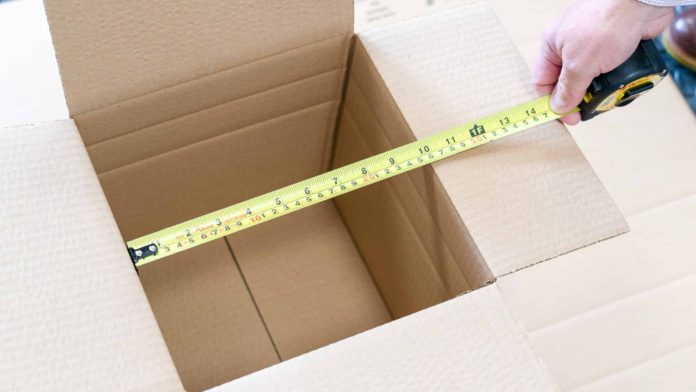From product packaging to logistics, a box dimensions are of crucial importance in any business. It is essential to understand how to accurately determine the box dimensions and save time and money while guaranteeing the product safety We, therefore, have brought you a simple and concise step by step guide on measuring a box dimensions. Following these guidelines, you can confidently Measure your box for an ideal fit and warehouse storage.
More About the Basic Dimensions of the Box
Box dimensions means the three measurements: length, width, and height. These dimensions are normally expressed in inches or centimeters, or other units depending on the locale in which the packaging will be used. Knowledge of such measurements is crucial as it influences the cost of its shipment and how your goods fit into the box.
Length: It’s the longest side of the box when looking at the opening.
Width: Shortest side of the box’s opening.
Height (or Depth): The vertical dimension from the top opening to the bottom one.
A Simple Guide on How to Measure the Dimension of the Box
- Start with the Length: Lay the box horizontally on the table or any flat surface with the open end of the box at the uppermost. Begin the process of measuring from the longest side of the box. Take a measuring tape or ruler and make it straight so that it will lie along the edge of the box. Document this as the length.
- Measure the Width: Next, you should measure the shorter side of the box’s opening. Once more, make sure your measuring instrument is straight and parallel to the box’s outline. This measurement should be recorded as the width.
- Determine the Height: Lastly, determine the height of the box. This is the height of the box inferred from the gap between the top of the opening to the bottom of the box. Ensure that you have the measuring tool held vertically. Record this particular measurement.
- Double-Check Your Measurements: Preciseness is very important when it comes to measuring dimensions. Crease a triangle around each one to ensure that no mistake in the measurements is made. It may be disastrous in terms of packaging, leading to high shipping costs.
Choosing The Box with the Right Dimensions
Consider the following factors when selecting a box, the right dimensions of which are crucial to determine.
- Check out if the box ensures efficient use of storage space in the warehouse without consuming a lot of space.
- Freight charges depend on the dimensional weight of the consignment. The correct measurements avoid an overcharge on the rental fees.
- Properly fitting boxes ensure the products do not get damaged during transit. A large box will make the product shift about inside the box and a small box will force the product to have to fit a certain way and end up getting destroyed.
- Correct measurements improve the general impression of the clients hence improving the reputation of the business, so never ignore customer satisfaction.
How to Measure Oddly Shape Boxes
- If you’re dealing with non-standard or irregularly shaped boxes, consider these tips.
- Ensure you measure the width at the widest points even if the shape of the box is irregular. This will also ascertain that the box will fit your shipping or storage constraint.
- If the box is purposefully fit to carry particular products, it is necessary to measure internal dimensions of the box for a better fit.
Conclusion
The accurate measurement of the dimensions of the box is an essential factor that affects operations such as delivery and consumer satisfaction. According to this guide, it is easy to measure the boxes correctly.
It not only becomes easier to handle all your boxes but also improves your services. Whether one is shipping goods in a certain region or the other is storing them in a warehouse, an accurate measurement of the boxes emerges as an effective tool for handling the business.










